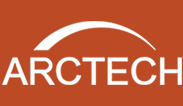<china’s Top Runner Program> How To Use Tracker To Lower Electricity Price And Improve System Energy Yield
China's Top Runner Program is a government scheme designed to strengthen technological innovation and promote PV industrial upgrading by building state-of-the-art PV solar plant. Since 2015, the program has been progressed to the third batch.
1. Two Major Indicators of China’s Top Runner Program: Electricity Price and System Efficiency
Compared to previous two China’s Top Runner Programs, the technical threshold for the 3rd China’s Top Runner program is significantly higher than before. Electricity price and system efficiency have become the important indicators that PV system investors pay much attention to. And for now, it is necessary to reduce the cost and enhance energy output of system, so as to lower PV solar electricity price finally. Furthermore, through analyzing the actual operational data on a large number of project sites, it demonstrates that bifacial modules with tracking system can effectively enhance system efficiency and achieve higher energy yield.
In view of this, the solution of lowering electricity price and improving system efficiency from the standpoint of theoretical studies and practical measure data will be briefly illustrated in this article.
2. Lowering Electricity Price (Arctech Solar’s operation data)
Due to the differences of irradiation, geographic latitudes, applied facilities and invested capital among PV solar plants, the system solutios we can apply to a project is totally different, and thus affecting electricity price. However, from the perspective of enhancing energy generation and initial EPC investment projects, the project data provided by the Research Institute of Arctech Solar shows that the solar plant’s energy production can increase up to double as additional energy output in some cases, when using horizontal single-axis tracking system.
For example, one of China’s Top Runner Programs in Baicheng city, the energy production can be increased up to 16.3% (see Figure 1) when using single-axis tracker with 5° tilt (the angle between module and torque tube is 5°, see Figure 2), while the land coverage ratio can be reduced by 0.6% and the increase of initial EPC investment is less than 8%. Here I recommend three solutions for the investors.
Solution 1: Bifacial modules with horizontal single-axis tracker
It is applicable to all China’s Top Runner Programs, mainly because total energy generation can be enhanced more than 18%;
Solution 2: Conventional modules with horizontal single-axis tracker
It is applicable to Class I and II irradiancy regions, especially the regions with heavy sandy wind (considering its own sufficient energy generation and mechanical cleaning);
Solution 3: Conventional /Bifacial modules with horizontal single-axis with 5° tilt
It is applicable to Class III irradiancy regions and high-latitude regions (above 40°).
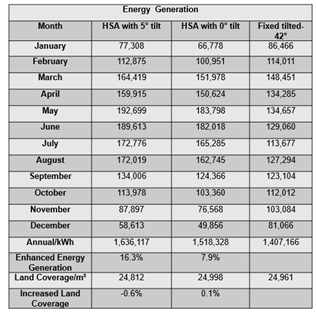
Figure 1: Comparison of Enhanced Energy Generation by horizontal single-axis tracker with 5° tilt and 0° tilt
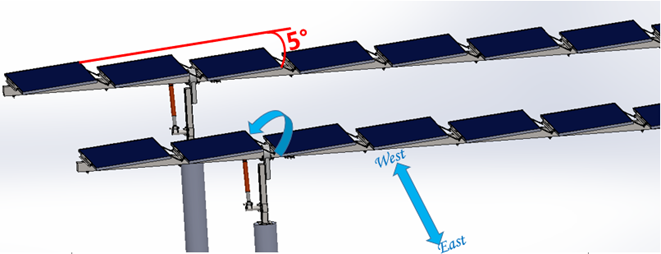
Figure 2: Horizontal single-axis tracker with 5° tilt
It can be seen from Figure 3 that the differences of enhancing energy generation among solar power plants when using different system solution.
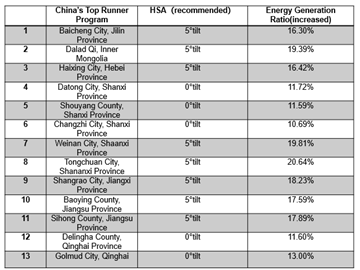
Figure 3: Simulation corresponding to Tracking System Solutions for China’s Top Runner Program
By applying tracking system, average LCOE(the levelized cost of electricity)reduction can be achieved by 5%-10% for different Top Runner Programs. More specifically, LCOE can be lowered by RMB 0.05-0.1/kWh (0.008USD-0.016USD/ kWh) and even RMB 0.15/kilowatt-hour(0.024USD/kWh).
3. Improving System Efficiency (Theoretical study)
At present, the energy efficiency ratio is well recognized as PV power plant’s system efficiency, this numerical value can reflect the efficiency of conversion from the energy received by module to electric energy of power grid (also its long-term data can reflect quality of solar power stations). However, when using tracker system, the enhanced solar irradiation received by modules can not reflect its pros and cons in an objective manner. To a large extent, the PV industry lacks standard overall indicator to merit conversion efficiency of solar power plant.
In fact, if the global horizontal solar irradiance is used as the input, the energy output from a PV power station used as denominator to merit its system efficiency, that is mostly equitable and objective. It is because that once the electricity-generating capacity of solar plant was specified, the energy output capacity per unit area divided by global irradiance per unit area will be the solar power system efficiency.
?=E/(GHI*S)
?—System efficiency
E—Energy generation
GHI-Global horizontal irradiance
S—PV solar plant’s land coverage
It can be seen from above equation that increasing energy output per unit is the key to the transformation capacity of a PV solar plant, once its capacity is specified.
Except solutions of conventional module and horizontal single axis tracker with 5° tilt/ 0°tilt, another solution of increasing energy generation is to apply bifacial module and horizontal single axis tracker with 0° tilt. With its advantage of backside modules, it can increase 15% to 25% additional system power output than frontside. For instance, the highly reflective from grassland and sands can increase energy output by more than 10%.
Considering the costs of materials and module cleaning, the additional 20% output generated by horizontal single axis tracker, bifacial modules and horizontal single axis with 0° tilt is a highly recommended.
4. Arctech Solar’s Solution
Compared with mounting structure, linked-row single axis tracker has a stricter require on graphical and geological conditions. Even the tracker system is well accepted by the investors, literately, I shall not recommend it, because it will increase costs, especially when the project is set up on the hilly and mountainous area.
In order to address this challenge, we launched our new product SkySmart, which is specifically designed for bifacial modules. SkySmart integrates the latest technologies, including slope adaption, quick-installation, cleaning equipment, LoRa-wireless communication and so on. Further to this, SkySmart is compatible with all commercially available PV modules. What is particularly worth mentioning, SkySmart can maximize the value of bi facial modules, due to its advantage of uncovered backside of bi facial modules.


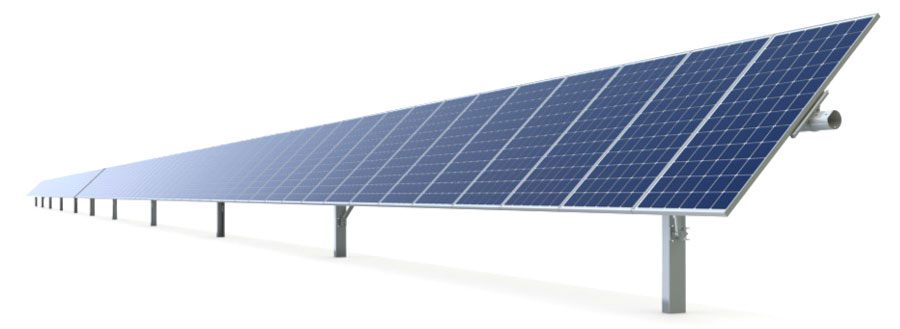
.jpg)
